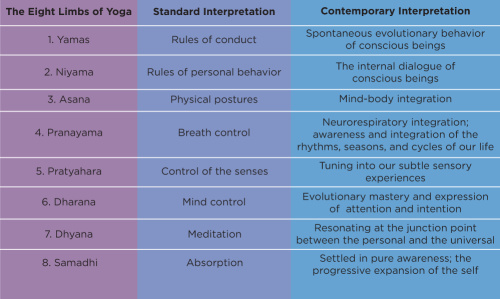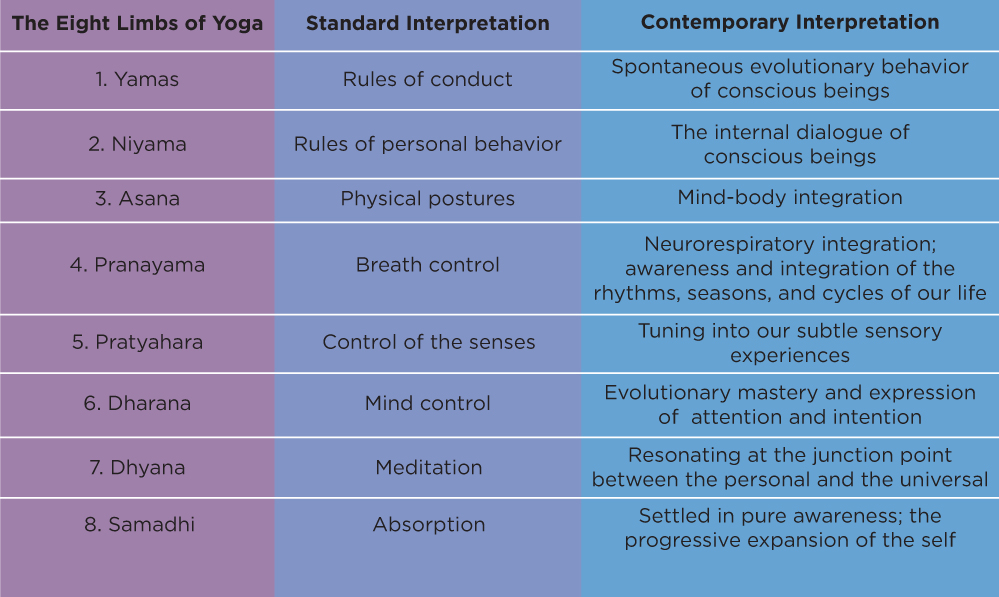
NOVEMBER POM & TOM: Dharana, Gratitude, Drishti, Mantra
October 31st, 2014we continue our exploration of the ashtanga (eight limbs) of yoga, we move into Dharana, which means “the
binding of the mind to one place, object or idea” and is usually translated as concentration. “Dharana,
at its very heart, can be thought of as the work it takes – the
practice – to get your mind to the point where it’s ready for
meditation. So dharana isn’t so much the state of concentration, but
it’s more the act of bringing your “monkey mind” back to whatever it is
you’re focusing on. Again, and again, and again.” (Read more here: http://www.yogaglo.com/blog/2013/04/eight-limbs-of-yoga-dharana/)
(internal) gaze to enhance contemplative and meditative practices. If
you find yourself closing the eyes during any practice and focusing on
the dramas or perplexities of life instead of being able to maintain a
neutral, detached focus, re-establish an outer gaze. On the other hand,
if the outer gaze becomes a distraction to your concentration, perhaps
an inner-directed correction is necessary.”
In the Bhagavad Gita (VI.13) Krishna instructs Arjuna, “One
should hold one’s body and head erect in a straight line and stare
steadily at the tip of the nose.” When using the inner gaze, sometimes
called Antara Drishti, the eyelids are closed and the gaze is directed
in and up toward the light of the third eye. As Iyengar puts it, “The
closure of the eyes … directs the sadhaka (practitioner) to meditate
upon Him who is verily the eye of the eye… and the life of life.”
(Read more here: “See More Clearly By Practicing Drishti” by David Life http://www.yogajournal.com/article/philosophy/the-eye-of-the-beholder/)
NOVEMBER POM & TOM
Our Themes of the Month for November are Dharana and the seasonal practice of Gratitude. You can combine these themes (concentrating on thoughts or feelings of gratitude) or teach either, throughout the month.
are powerful hip and hamstring openers which incorporate the practice of
drishti, or focused gaze.
Asana:
Vinyasa – Virabhadrasana III (Warrior 3, perhaps with Archer Mudra)
Deep Stretch – Akarna Dhanurasana I (aka Archer’s Pose or Shooting Bow Pose) <– be sure to offer props, such as blankets to sit on and a strap
Resources
Virabhadrasana variations – http://2ndstartotherightyoga.wordpress.com/2010/11/10/become-a-yoga-warrior-with-virabhadrasana/
Ayurveda – Seasons of Change: http://www.yogajournal.com/health/2617
Pranayama: Ujjayi Breath, Natural Breath (especially in guided relaxation), Nadi Shoduna (Alternate Nostril Breathing)
Resources
Nadi Shoduna Pranayama – http://takemetotheriveryoga.com/wpsite/?tag=dharana
Mudra:
Hakini Mudra, “Archer Mudra”
Resources
Mudras: http://www.joythruyoga.com/mudras.html

you! Please let me know if you have any questions, and
please share your thoughts, inspirations, and any additional resources
you find on our Facebook Group page. I hope to see you on the mat, soon.
With dedication,
Allison
p.s. Want to learn more about Mantra & Meditation? Sign up for Mara’s workshop on 11/8! Unless you’re coming to The Art & Science of Assisting with Kellie, Ashley, and me, of course!  More details here: http://beyogaandwellness.com/events-2-be-yoga-charlotte/
More details here: http://beyogaandwellness.com/events-2-be-yoga-charlotte/





